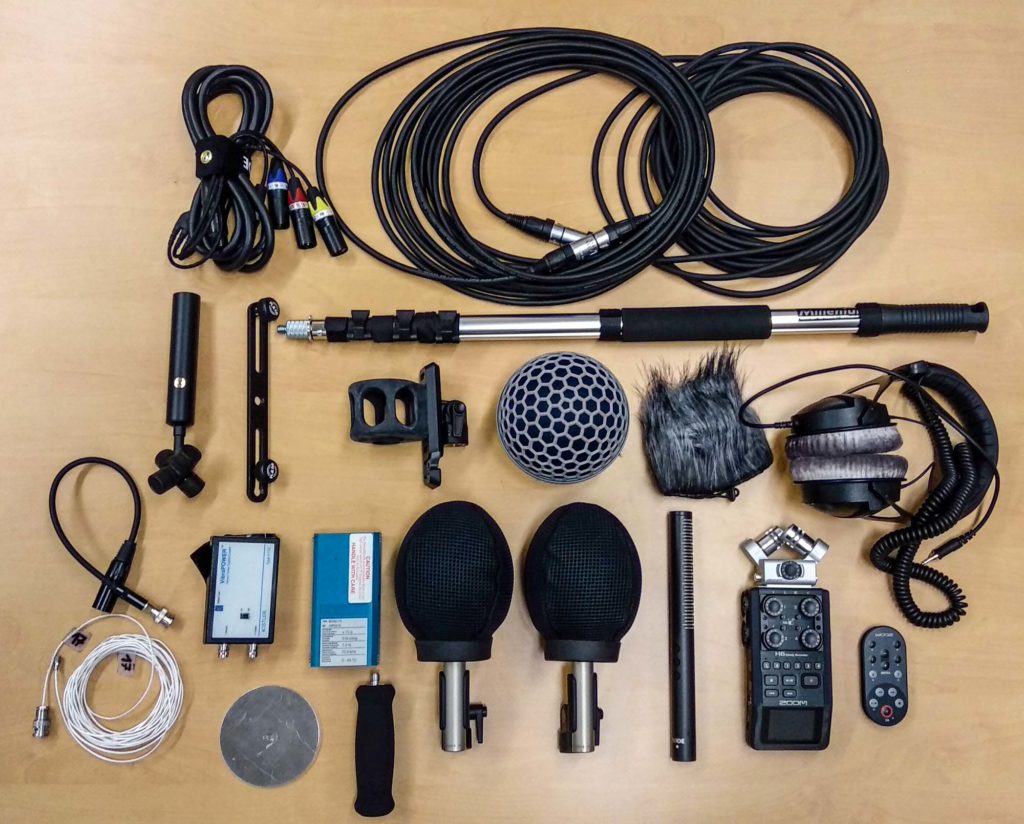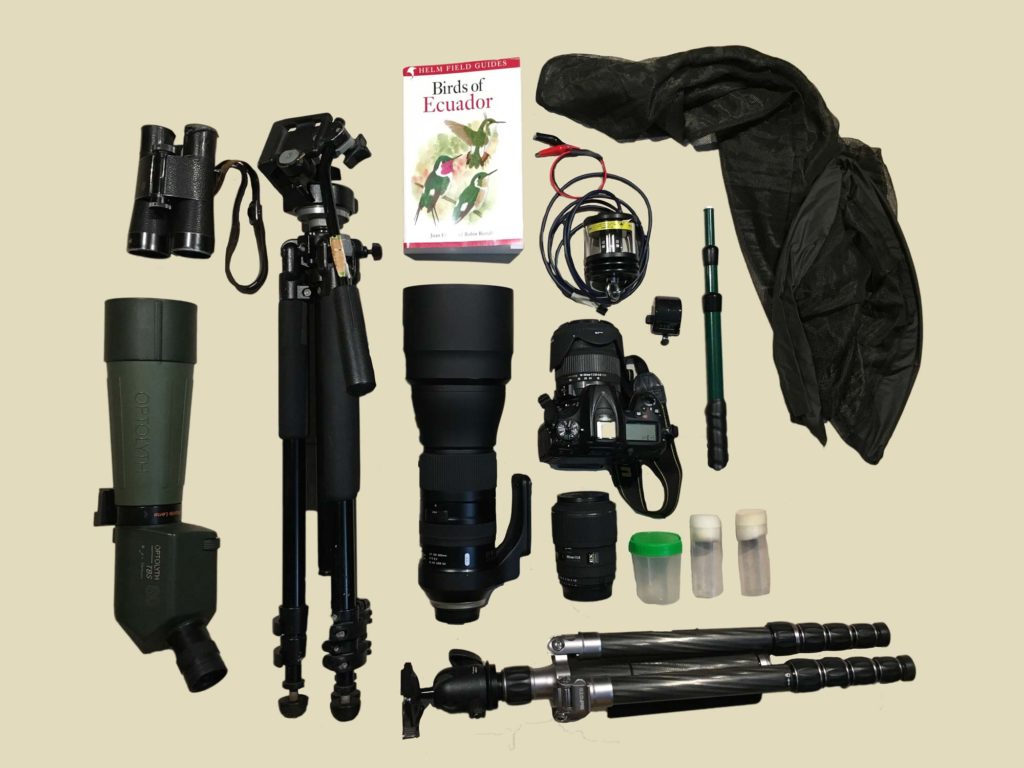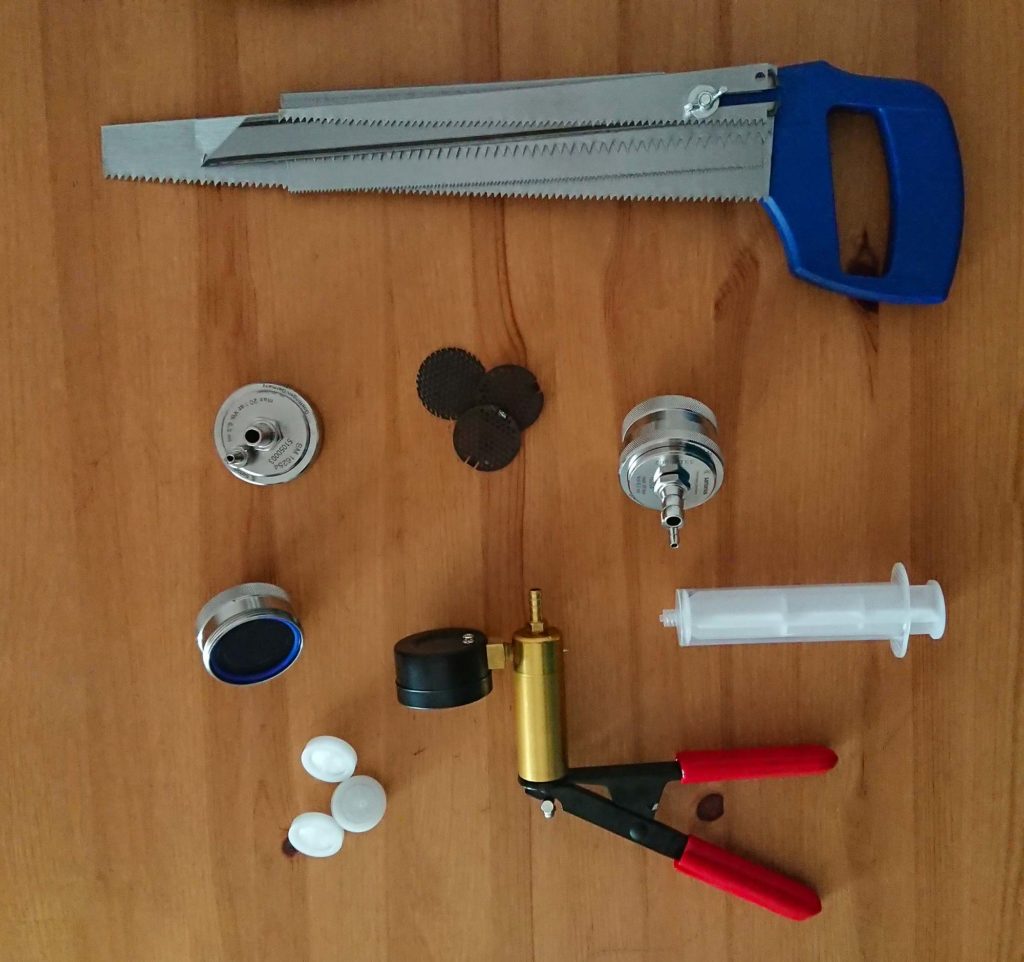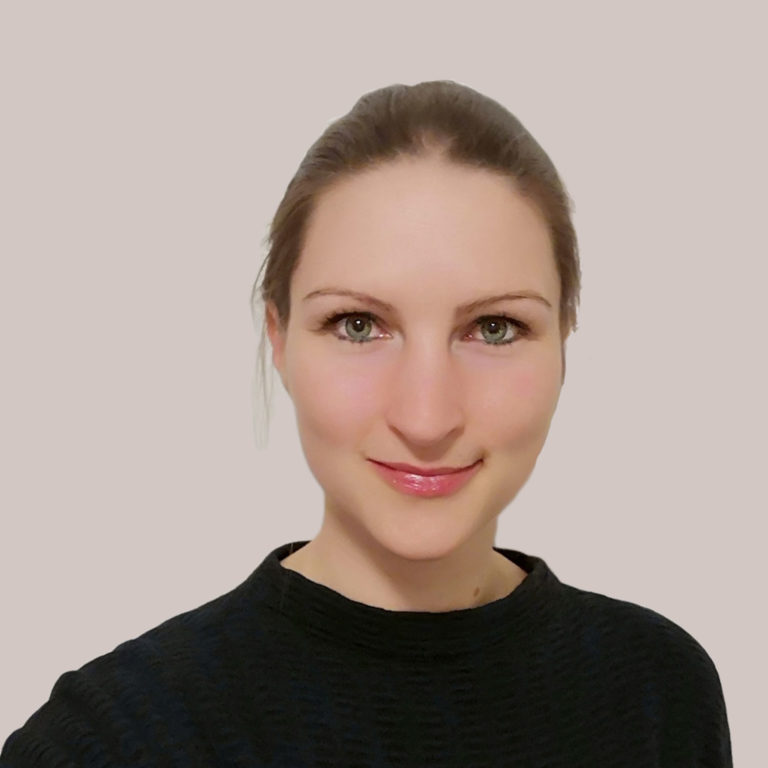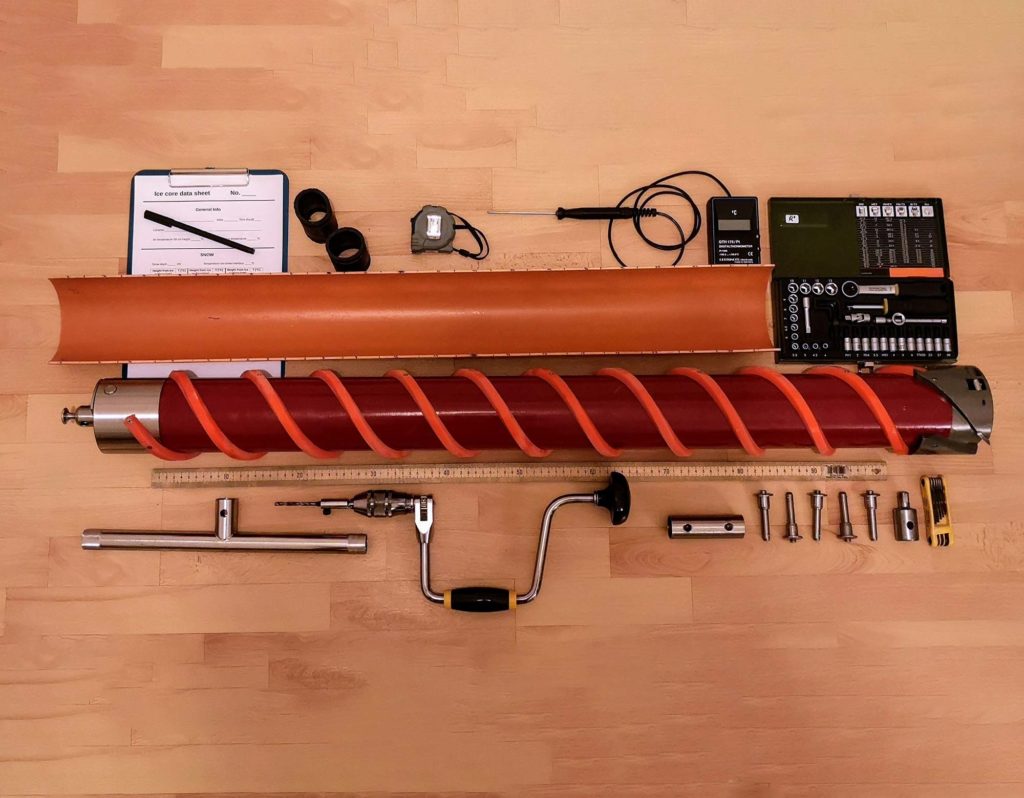Miriam Akkermann
Musicologist | Topic: Sound Profiles

What’s in your luggage?
I plan to make sound recordings at a variety of places, so I’m bringing different microphones and the corresponding wind screens and cords, as well as two recording devices. What does it sound like on and inside of glaciers? What do you hear in the forest? How much of that sound is caused by humans? For my field recordings, I want to work with stereo, binaural and Ambisonic formats. In case weather conditions (rain, temperature) or technical issues make it impossible to use large equipment, I’m bringing a small recorder as an emergency option so that I can at least do some test recordings. I’m also bringing a boom pole, which allows me to hold the microphone at a distance so that I can record inside of boreholes in the ice. I’ll use my camera to document my work, including the location and position of the microphones.
What is your most important tool on the expedition?
